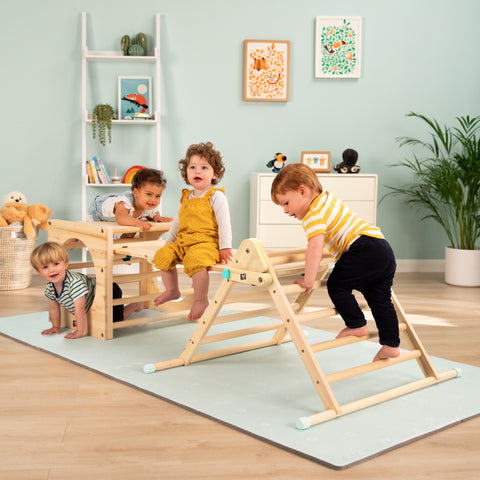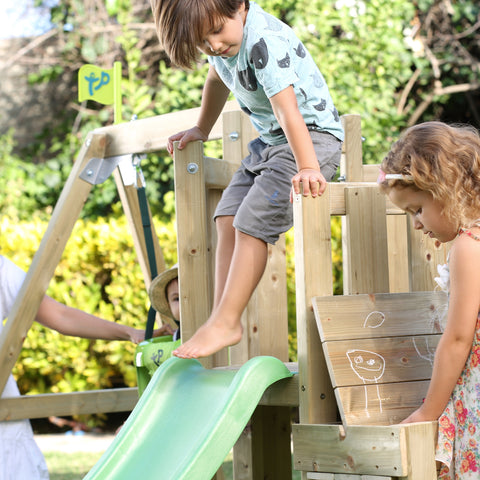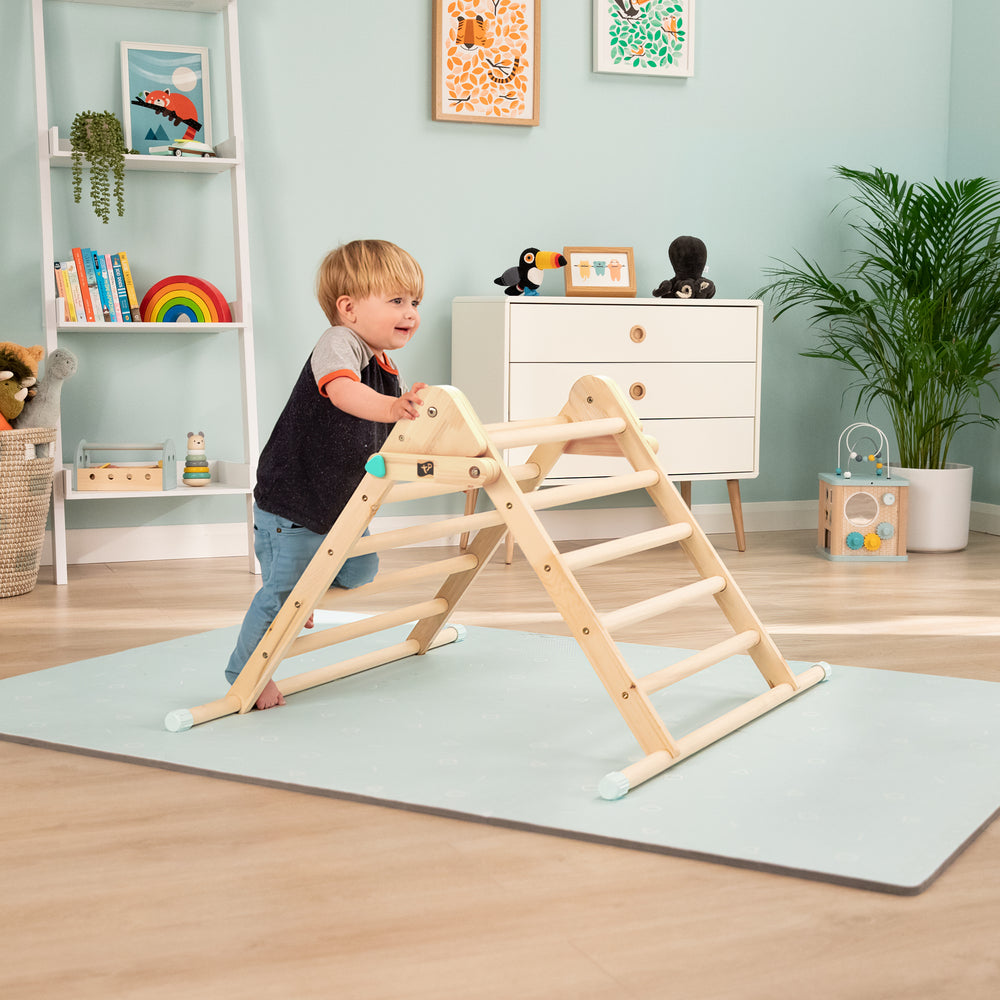Climbing frames are so much more than simple play structures; they are incredibly dynamic play spaces where young children can take themselves on journeys of physical, cognitive, and social growth. In this article, we look into the many benefits of climbing frames in the development of babies and toddlers, and discover how these structures are valuable tools for nurturing every part of a child’s development.
From the moment children first set foot on a climbing frame, they are naturally drawn to its towering heights, intricate pathways, and endless possibilities for exploration. For younger children, specially designed climbing frames for toddlers introduce them to a world of adventure and discovery, where every step, reach, and leap brings them closer to new experiences and milestones. As they grasp onto handholds, test their balance on narrow beams, and conquer obstacles with determination, children are not just playing; they are actively shaping their physical, cognitive, and social development.

Physical Activity and Gross Motor Skills:
The physical activity and coordination involved when playing on climbing frames promote the development of essential gross motor skills. From climbing ladders to swinging on monkey bars on a baby climbing frame, each movement challenges children to coordinate their muscles, balance their bodies, and navigate the space. Through repetition and trying new things, they refine their motor skills which will help them to gain strength, agility, and confidence in their physical abilities. (superfluous sentence removed)
Sensory Stimulation and Exploration:
Climbing frames are an environment that has been specifically designed to stimulate children's senses and inspire exploration. As children interact with the various textures, surfaces, and structures of the climbing frame, they get sensory feedback that helps shape their understanding of the world around them. From the sensation of gripping onto rough ropes to seeing the wider-reaching views from the top of the highest spot, climbing frames are a multisensory experience that piques children's curiosity and builds their ability to process their surroundings. By using all of their senses, children develop a deeper awareness of their environment which helps to lay the groundwork for other important life skills.
Encouraging Problem-Solving and Cognitive Development
Climbing frames help to develop a child’s problem-solving skills and critical thinking by allowing them to overcome challenges at their own pace. From figuring out the best route to the top to tackling all obstacles along the way, children are constantly engaged in mental processes that promote cognitive development. By overcoming these challenges they develop perseverance, resilience, and spatial awareness, which will help pave the way for future academic and social success.
Types of Climbing Frames for Developmental Benefits
When choosing a climbing frame for babies and toddlers, it's important to be mindful of features that promote developmental growth. Look for play equipment that lets them use their hand-eye coordination, their grip and grasp skills, and will increase their flexibility. Climbing frames with multiple levels, varying textures, and interactive elements like monkey bars and ropes give children a wide range of experiences that will help support their physical and mental development.

The Mental Benefits of Climbing Frames
As well as developing their strength and coordination, climbing frames have a host of mental benefits for young children. Climbing frames encourage active play, and this helps to release endorphins, reduce stress, and improve overall mood and mental well-being. Additionally, the social aspect of climbing frames encourages children to interact, cooperate, and develop essential social skills like sharing, taking turns, and communication.
Fostering Hand-Eye Coordination
Hand-eye coordination is a fundamental skill that underpins many other areas of a child's development, from fine motor tasks like writing and drawing to more advanced activities like playing sports and musical instruments. Climbing frames are an excellent opportunity for children to develop their coordination as they reach for handholds, grasp ropes, and navigate obstacles. By repeating these movements over and over while playing, children develop greater control over their movements and improve their dexterity and coordination.
Health Benefits of Active Play
Regular physical activity is vitally important for healthy growth and development in younger children. Climbing frames are an excellent way for children to engage in active but safe play, helping to build physical strength, stamina, and fitness. By including climbing frames in outdoor playtime, parents can encourage healthy habits that will benefit children throughout their lives.
Safety Considerations
While climbing frames have several benefits for developmental growth, safety should always be a top priority. Choose climbing frames that are age-appropriate, and sturdy, with safety features such as rounded edges, non-slip surfaces, and secure handholds. You should keep your frame well maintained, always supervise children closely during playtime, and teach them proper climbing techniques to minimise the risk of accidents or injuries.
Social Interaction and Cooperative Play
Climbing frames are a social hub where children come together to play and interact. Whether it's going on a climbing expedition together, agreeing roles in a make-believe game, or just laughing and being silly, children learn valuable social skills from playing which help them form healthy relationships. Playing on climbing frames allows children to practise communication, cooperation, and empathy, letting them build confidence in how they interact with others. By building a sense of belonging and community, climbing frames promote inclusive play experiences where every child feels valued and involved.

In conclusion, climbing frames play a very important role in supporting the developmental milestones of babies and toddlers. From improving gross motor skills and cognitive development to encouraging sensory exploration, these versatile outdoor play areas offer a wealth of benefits for young children. By choosing the right climbing frame and providing a safe and nurturing play environment, parents can empower their children to thrive and grow both physically and mentally.




